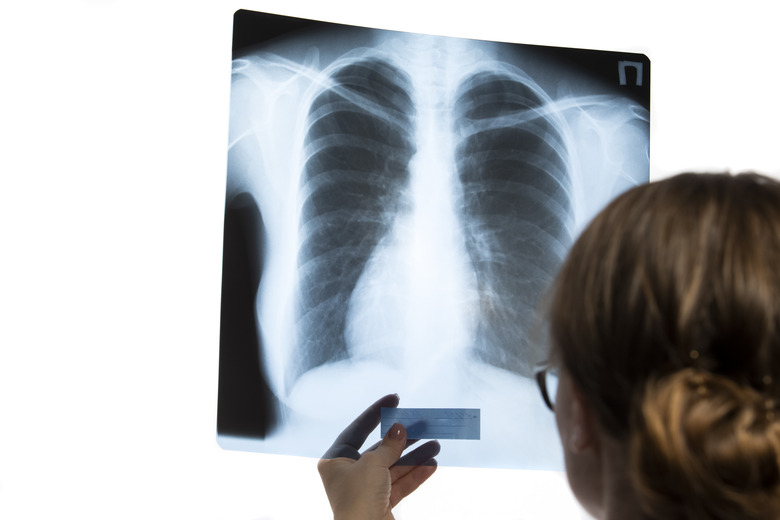Radiography Reciprocity Law
Radiography uses the laws of photography to take cross-sectional images with X-rays to produce photos of varied density material, such as the human body. Radiologists require proper exposure of X-rays to accurately analyze the photos. The reciprocity law controls exposure balance, or the light level of an image.
Definition
Definition
A photography term, reciprocity refers to the inverse relationship of light and intensity on film to produce a clear and balanced exposure. Ignoring the reciprocity law causes underdeveloped and overexposed photos. A balanced exposure can be reached at more than one level of intensity and time. As one factor changes, however, the other must also change equally in the opposite direction to maintain proper exposure. For example, if you increase the amount of light intensity by one unit, you must reduce the amount of time by one unit and vice versa.
Formula
Formula
The reciprocity law formula used in photography requires the exposure to equal the intensity of light multiplied by time. Radiology re-formats the equation for its equipment and exposure needs. In radiology, the reciprocity law is generally read as:
C1/C2 = T2/T1
C1 = Current* 1 C2 = Current 2 T1 = Time 1 at C1 T2 = Time 2 at C2
*The current used in the radiology formula is similar to intensity in photography, where it is the intensity of the X-rays or the amount of light current that is used on the film.
Reciprocity Failure
Reciprocity Failure
A shift in color balance and underexposure occurs when the reciprocity law fails, also known as the reciprocity effect. This happens when the speed of the film is reduced significantly, which alters how the film reacts to light over time. Very slow speeds need further light exposure.
Cite This Article
MLA
Ivey, Kelsey. "Radiography Reciprocity Law" sciencing.com, https://www.sciencing.com/facts-7332239-radiography-reciprocity-law/. 13 October 2010.
APA
Ivey, Kelsey. (2010, October 13). Radiography Reciprocity Law. sciencing.com. Retrieved from https://www.sciencing.com/facts-7332239-radiography-reciprocity-law/
Chicago
Ivey, Kelsey. Radiography Reciprocity Law last modified March 24, 2022. https://www.sciencing.com/facts-7332239-radiography-reciprocity-law/
